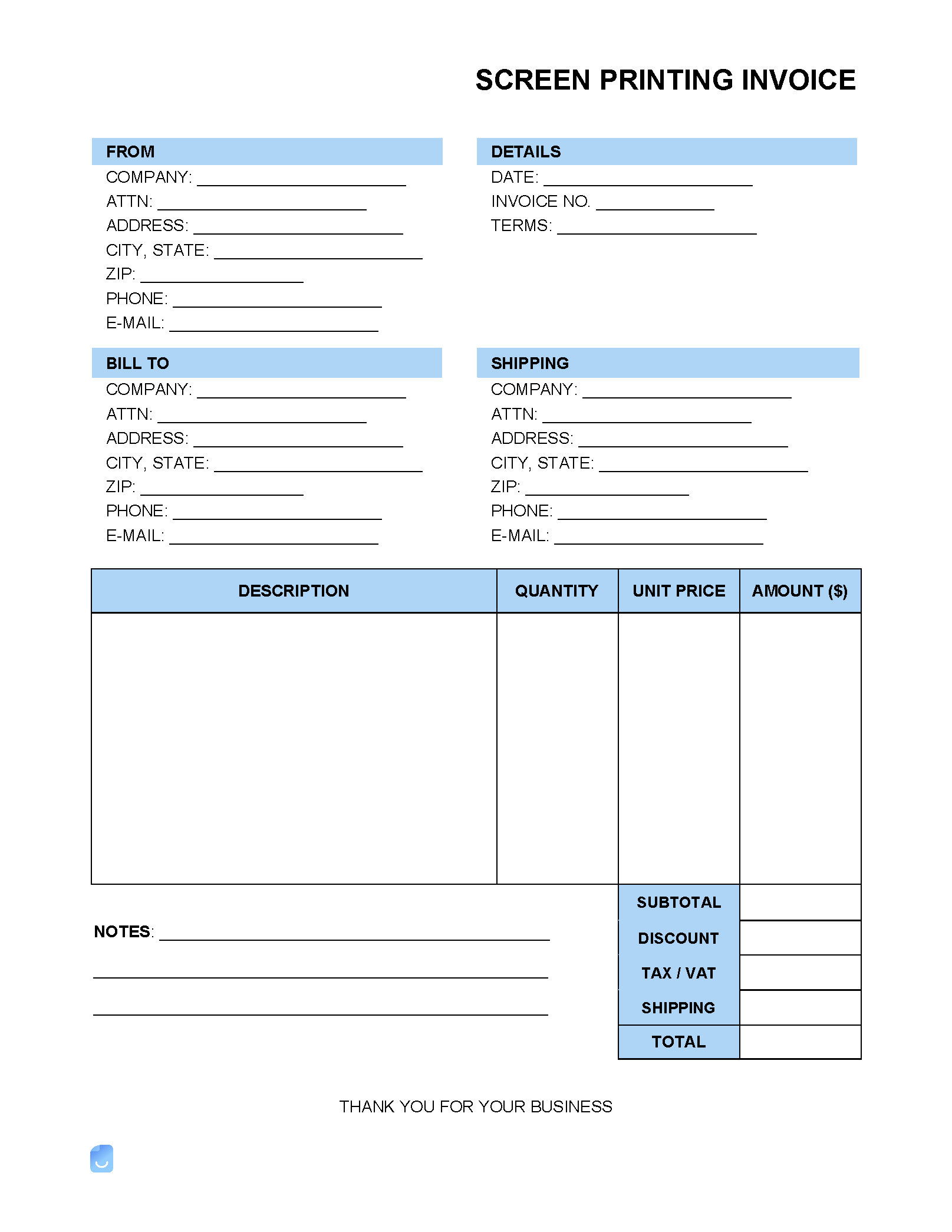Screen Printing Invoice Template
A screen printing invoice is a bill that is delivered after a client receives their order – often containing terms that require the client to make full payment within a set number of days, with increments of one (1) to three (3) weeks being common. Although one may think using a specialized invoice is solely for large printing companies, hobbyists and semi-professionals can and should make use of an official invoice for collecting payment due to the organized layout it provides for customers.
What is Screen Printing?
Screen printing is a process of transferring an ink-based design onto a cloth, glass, metal, or wooden material such as clothing, bags, mugs, flags, and signs. Cloth, by far, is the most common type of material used during the screen-printing process. The most common screen-printed items are t-shirts, which are frequently printed with one (1) or more company logo(s), such as a list of sponsors on a set of t-shirts for a running race.
The Screen Printing Process
The general concept of screen printing may be straightforward, but becomes more complex as the steps are broken down. As an overview, the general steps from beginning to end of the screen printing process are as follows: Step 1 – Create a design that will be applied to the material. Once completed, the design will have to be converted into a stencil. To do this, print the design out onto a transparent film. Step 2 – To prep the screen which will hold the design, a layer of emulsion will need to be added, which is a light-sensitive liquid that is applied over the stencil created in the first step. After the emulsion has been applied to the screen, it is inserted under a very bright light. The emulsion-exposed light then hardens. The areas of the stencil which contain black ink blocks the light from reaching the emulsion under it, keeping it in liquid form. The liquid is then washed-off, leaving an emulsion-free spot in the shape of the design. Step 3 – After the stencil has dried, it is placed in a specialized press. Professional screen printers often make use of a set of presses on a rotary, allowing them to press multiple colors with little time in between. The design is now ready to be transferred to the material. The printer will lay the screen onto the object and apply a uniform strip of ink across the top of the screen. Using a squeegee, the printer manually “presses” the design through the visible screen (from the stencil), leaving the wet ink in the form of the design on the t-shirt or similar item. Depending on the printing method used, the material may or may not need to be dried before applying additional coats. Upon finishing the printing, the item is then cured, typically through the use of a specialized dryer.
Screen Printer Salary & Hourly Rate ($/hr)
In the United States, screen printers can expect to have a salary in the range of $21,000 to $41,000. For hourly rates, screen printers can expect to earn $9.76 on the low end, and up to $17.22 on the high end. The industry averages for both salary and hourly rates are as follows:
